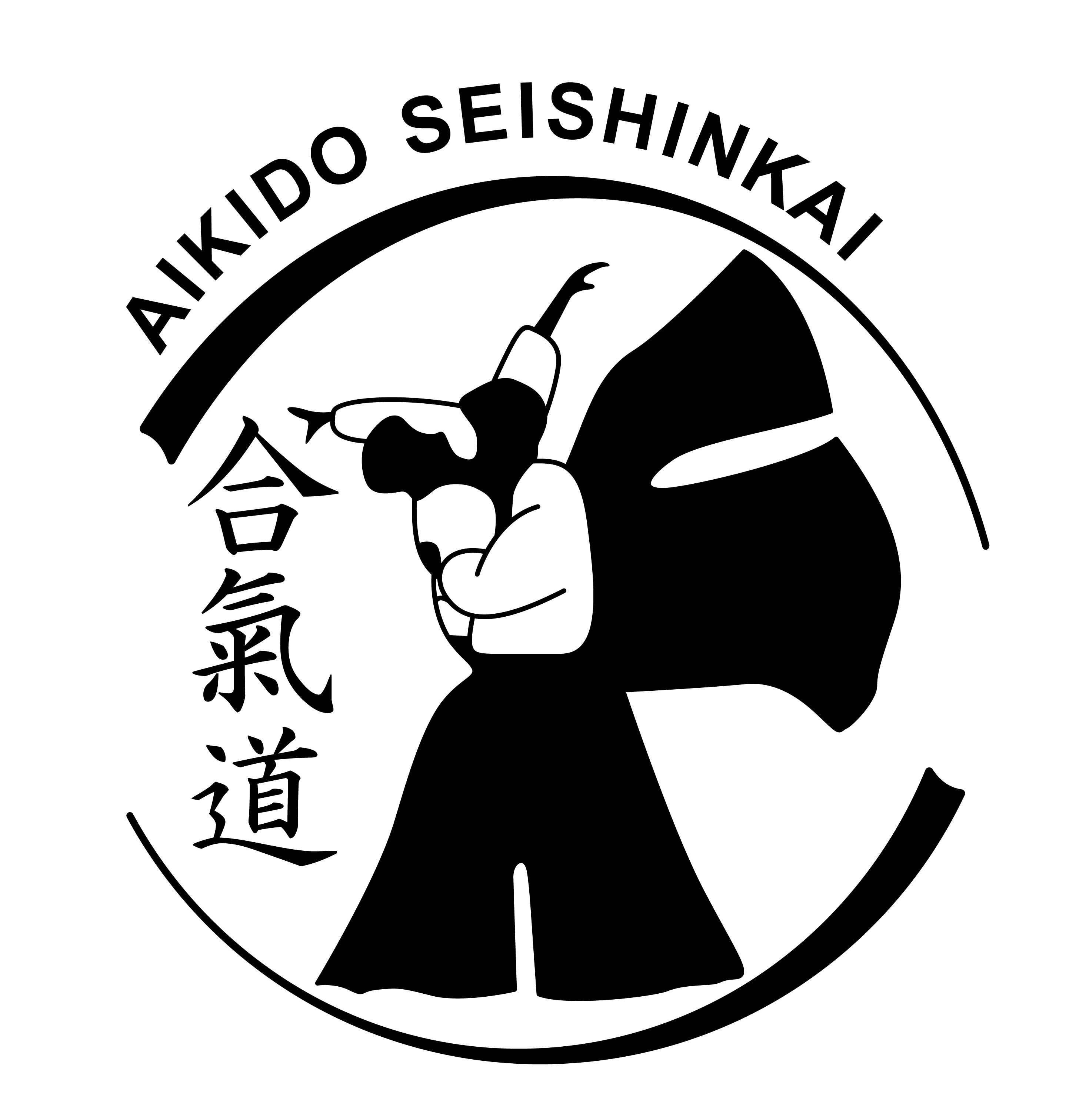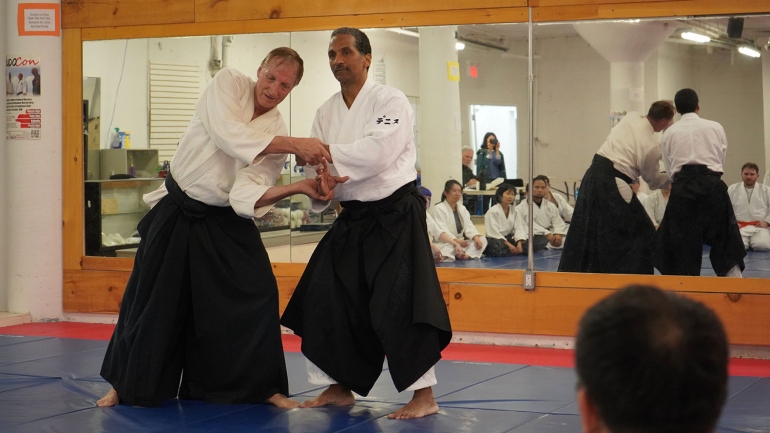Makoto Ohtsu (7 th Dan), Aikido Showa Dojo
Nagoya, Japan
The following continues Otsu Sensei’s presentation. He brings the perspective of a long time
Aikido student and teacher. He is also a retired professor of Business Studies who taught at
the University of Saskatchewan in Saskatoon where he led in the opening of an Aikido dojo
there. Fluent in English as well as his native Japanese, he offers a truly cross-cultural
perspective. The essay reflects his personal views. It has been lightly edited for length and
clarity.
Among various forms of social conflict, only racial/ethnic conflict and conflict over LGBT rights
will be addressed here. Although there are some differences between the two, they are essentially
the same in nature. These two types of conflict may be viewed as a protest against accumulated
“oppression” of social minorities by the majority group of people.
Today, largely as a result of protest movements by minority groups, as well as the sense of
atonement of the majority, discrimination of all types (political, economic, and social) has been
legally removed at least in advanced democratic nations under the slogan of “protection of
fundamental human rights”. As a result, most of the social conflicts, including the two in
question, are resolved according to the established laws and regulations. Often, major conflict
takes place in order to change legislation to the advantage of a particular minority group of
people such as racial/ethnic minorities and LGBT people. Democracy provides the political
mechanism to resolve these conflicts peacefully, without resorting to violence of any kind.
Although the grievances of social minorities are justifiable, if pushed too far, they will turn into
extreme demands and behaviors that cannot be effectively dealt with by the long established
democratic system. Rather, these demands and behaviors challenge the basic principles of
democracy itself. “Political correctness”, supplemented by “cancel culture” and “identity
politics” are among such examples.
Minority extremism, in turn, angers the majority, creating conservative extremists within the
ranks of the majority group. Attacks on minority rights, often with “hate speech” and “hate
crimes”, result. As anger is contagious and mutual, it grows in a vicious circle. Between the two
extreme groups, there is no room for compromise to arrive at an agreement. Agitated by those
extremists, the majority within both majority and minority groups seem to have been radicalized
and division within a nation has worsened over the years. It is this type of irreconcilable social
conflict that I am addressing here.
From the standpoint of the majority group that has been represented by vocal extremists a
different approach representing the views of a large number of people is needed. Those are the
so-called “common-sense people” who are willing to resolve the conflict within the framework
of democracy. In the following, I will discuss what this new approach is and how it may be
executed.
The essential ingredient to make democracy work is the art of compromise. In recent years, this
art of compromise seems to be degenerating in the Western democracies. I believe that the spirit-
based Aikido approach, which I have introduced previously, can effectively deal with the two
types of social conflict in question. Among the four levels of Aikido, level three is of direct
relevance. The objective of Aikido at level three is to “purify” Japan and the world, which
applies to all forms of domestic conflicts including the two types in question.
The only difference between Aikido and social conflict is that while Aikido deals with physical
violence, the conflicts in question involve verbal violence. Physical violence often does take
place. But it’s a matter to be handled by the police, not to be discussed here. The objective of
common sense people, then, is to defend their position against the verbal attacks by the minority
extremists (at levels one and two) with the ultimate goal of creating a harmonious society (at
level three).
To the extent that level three is based on levels one and two, the discussion at each of these two
levels is needed. The discussion at levels one and two presumes a situation where you as a
member of the majority group encounter a person with an extreme minority view. He/she may be
a member of not only the minority group but also the majority group.
As mentioned before, at level one of Aikido (physical Aikido), you build a strong body, train
defensive skills, and when attacked, defend yourself and control the opponent without harming
him/her. Likewise, in social conflict, you develop a clear-thinking brain, become highly
knowledgeable about important social issues, and when attacked, defend your position with your
profound knowledge and discussion skills, and have the opponent realize that his/her argument is
wrong.
At level two of Aikido (spirit-based Aikido), you “purify” yourself first by self-reflection and
correction. In the process, you have to win over yourself, namely, your ego and self-desire such
as your desire to defeat your opponent.
In the case of these two types of social conflict, you purify yourself by admitting that the
majority group that you belong to has been responsible for the accumulated discrimination and
oppression and also by agreeing with your opponent to rectify the situation. Naturally, the sense
of “atonement” will emerge; there remains no room for negative feelings toward minorities such
as superiority complex, contempt, anger and hate.
Then, you proceed to purify your opponent. In so doing, you follow the four steps of Aikido’s ki
usage, namely, ki-gamae (mind-setting), ki-musubi (mind-joining), ki-no-nagare (mind-leading),
and ki-osame (mind-sheathing).
At step one (mind setting), you set your mind to be “benevolent” toward your opponent. That
means that faced with an outrageous argument by the opponent, you are determined not to be
overwhelmed by your negative emotion; you will not attack the opponent himself/herself, or
attempt to engage in and win a debate, but have calm and friendly discussion throughout the
process. It is extremely important to acknowledge and accommodate their esteem and economic
needs within the framework of democracy.
At step two (mind-joining), you listen to the opponent’s argument without objecting to what
he/she has to say, and try to find a common ground for discussion. At step three (mind-leading),
from the common ground, you lead the discussion so that the opponent realizes that his/her non-
compromising demand for such issues as political correctness or identity politics, as defined by
the opponent, was wrong and agree with your common-sense solution. At step four (mind-
sheathing), you close the discussion in a calm and peaceful fashion, with a result that harmony
between you and your opponent is achieved.
At level three of Aikido, achieving social-level harmony, not individual-level harmony becomes
the objective of Aikido. The Founder was not specific about how to achieve it. I presume that he
expected an Aikidoist, who has mastered up to level two of Aikido (spirit-based Aikido), to
practice the Aikido spirit of love and empathy off the mats. Therefore, if an increasing number of
people learn Aikido, their off-the mat influence in the creation of a harmonious society will also
increase.
In fact, that was the conscious policy of the founder when he moved to Iwama in 1942. Prior to
that, Aikido (then called Aiki Budo) was taught exclusively to select elite groups of people
primarily in military and police forces. At Iwama he opened it to ordinary people primarily from
local communities. Since the Aikikai was reorganized after WWⅡ, it has actively promoted
Aikido throughout Japan and then the rest of the world.
In the case of the conflicts over the rights of racial/ethnic minorities and LGBT minorities, a
more systematic or political approach may be taken. As mentioned before, democracy is a
political system to deal with conflicting interests among people and to maintain harmony within
society. It is most ideal if consensus emerges out of a series of discussions among people of
different opinions.
If not, the decision is made by the so-called “majority rule with the protection of minority
rights”. As long as there are “die-hard” extremists on both sides over the issue of minority rights,
it is difficult to arrive at a consensus. The next best option is to suggest a common sense solution
and make efforts to obtain the support of the overwhelming majority from both majority and
minority groups.
To that end, organized movement, not individual level efforts, is needed. Here, it is highly
desirable that common-sense men and women overtake from the extreme conservatives, the
leadership of the movement against extreme demand for minority rights. Often, the extreme
conservatives are possessed by their negative feelings (prejudice) toward minorities which are
the driving force of their activities. Instead, we need common-sense leaders with love and
empathy toward minority people and with profound knowledge and experience over the issues in
question.
These common-sense leaders may be engaged not only in one on one discussion with the
extremists from both sides, but also in public speech and writing in an attempt to win majority
support. They may also be engaged in political lobbying so that common-sense legislation will
result. This way, the achievement of social harmony over the issue of minority rights protection
will become a reality.




